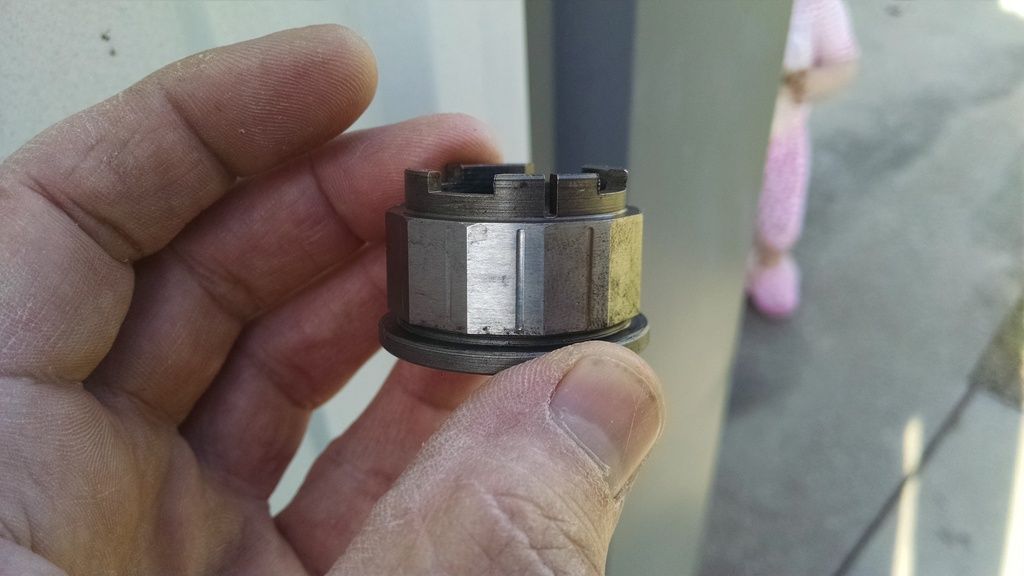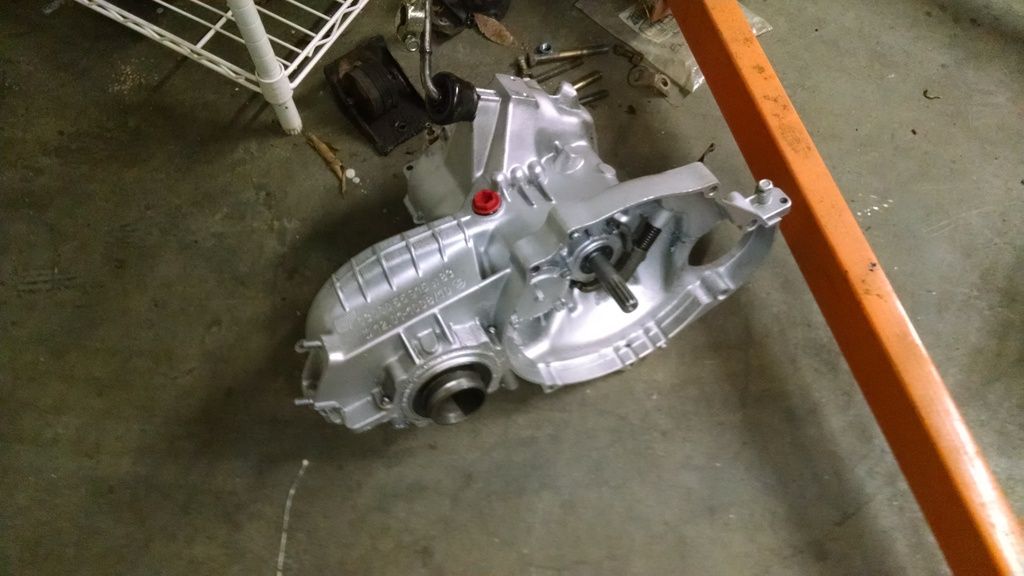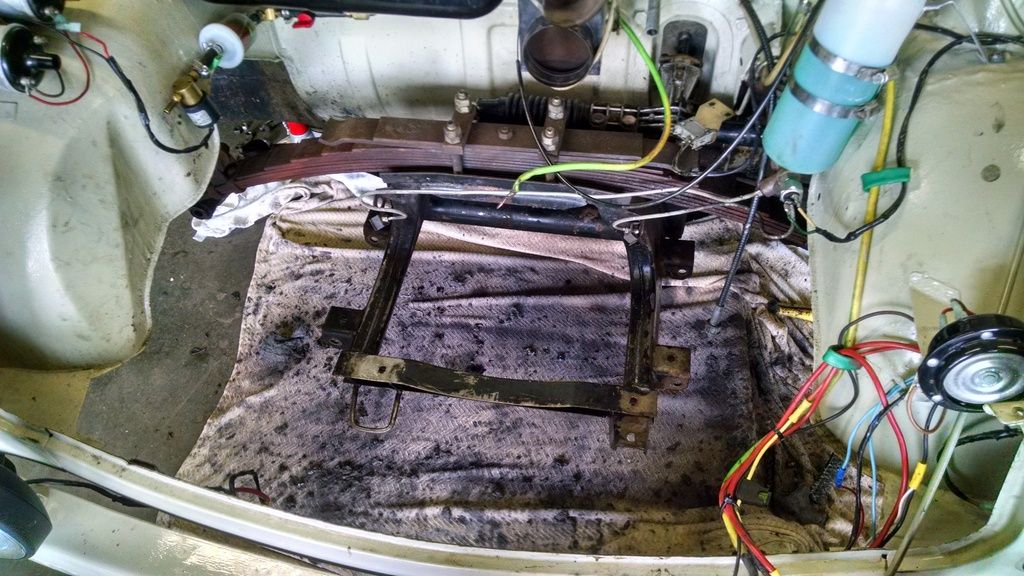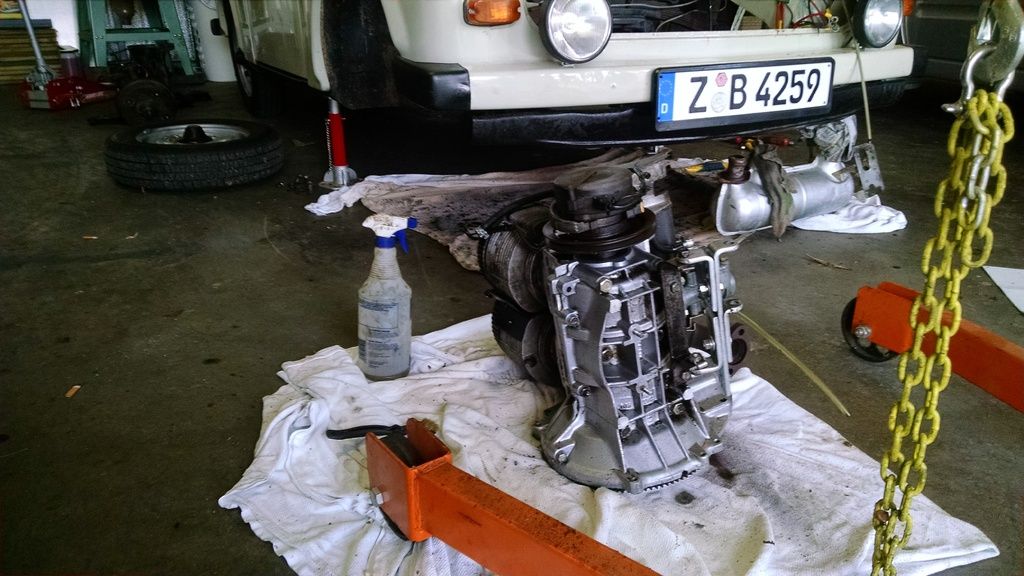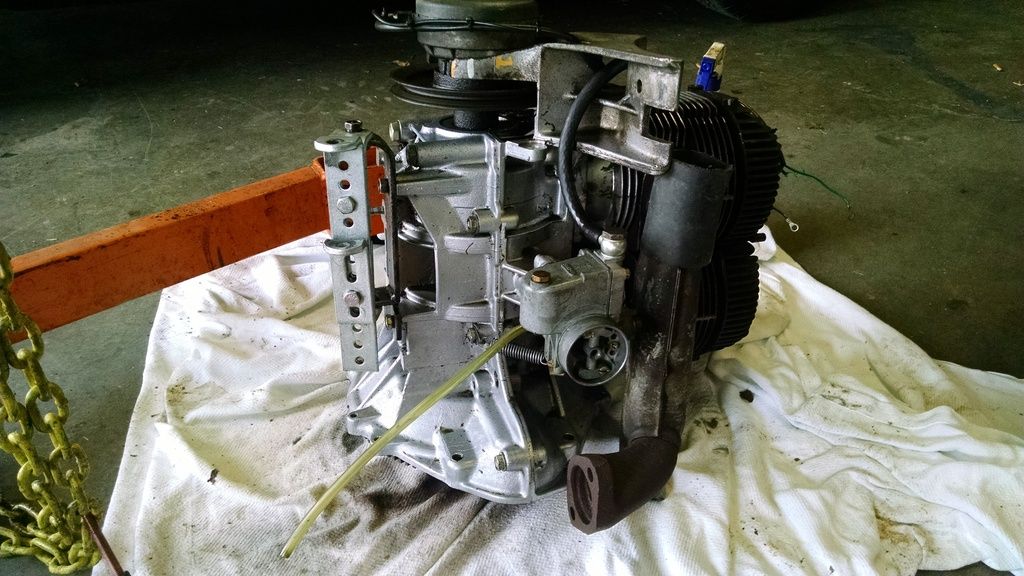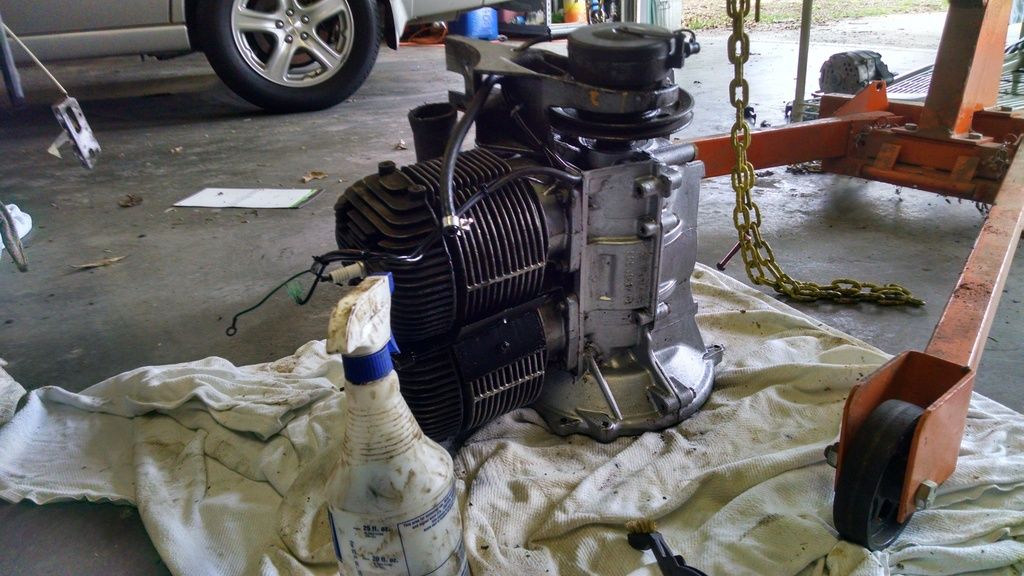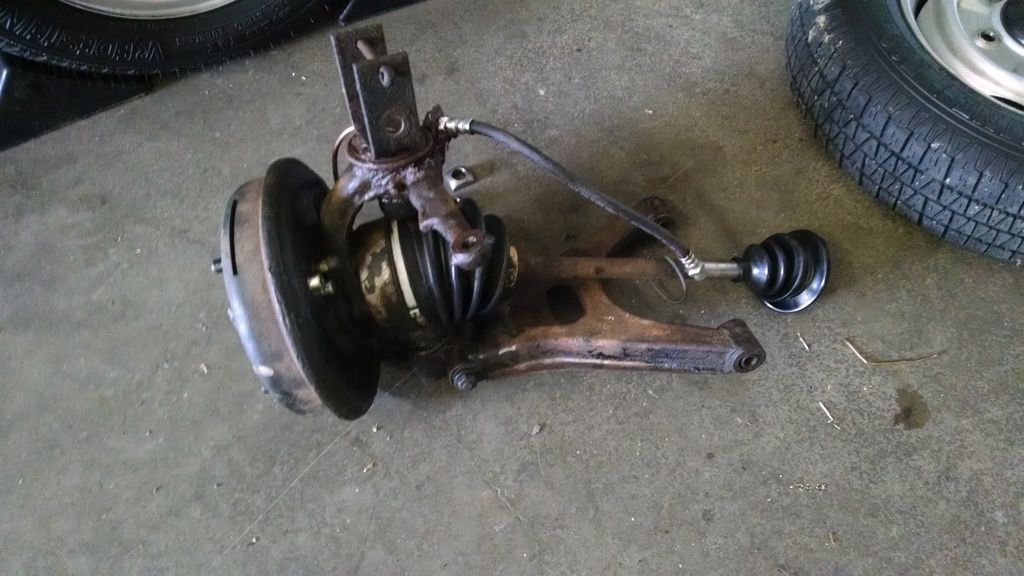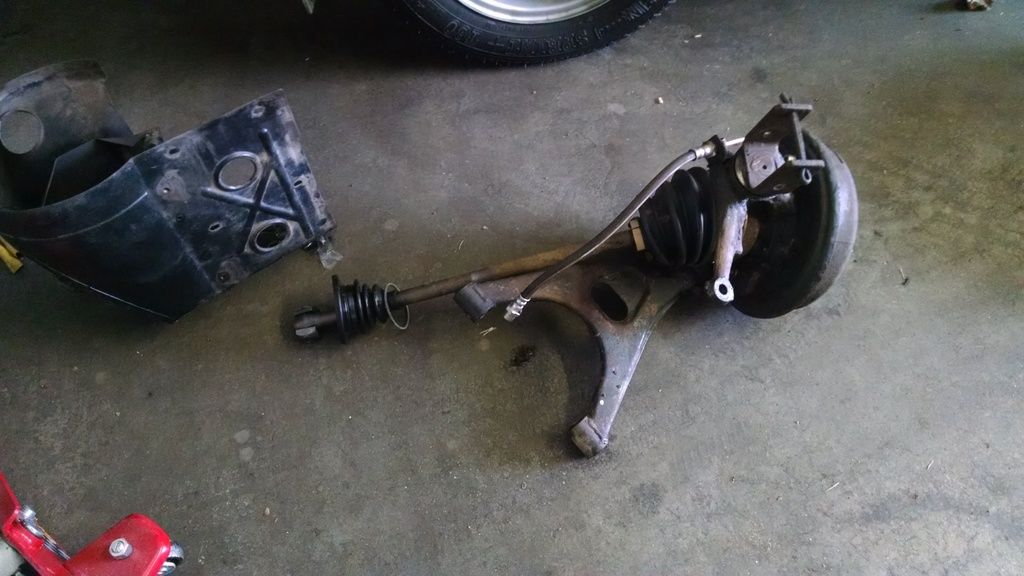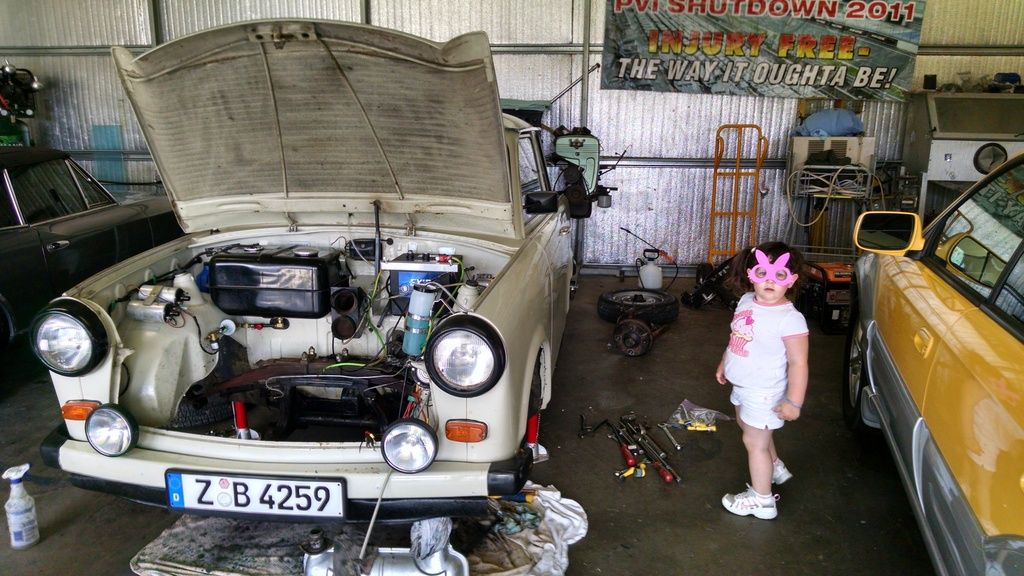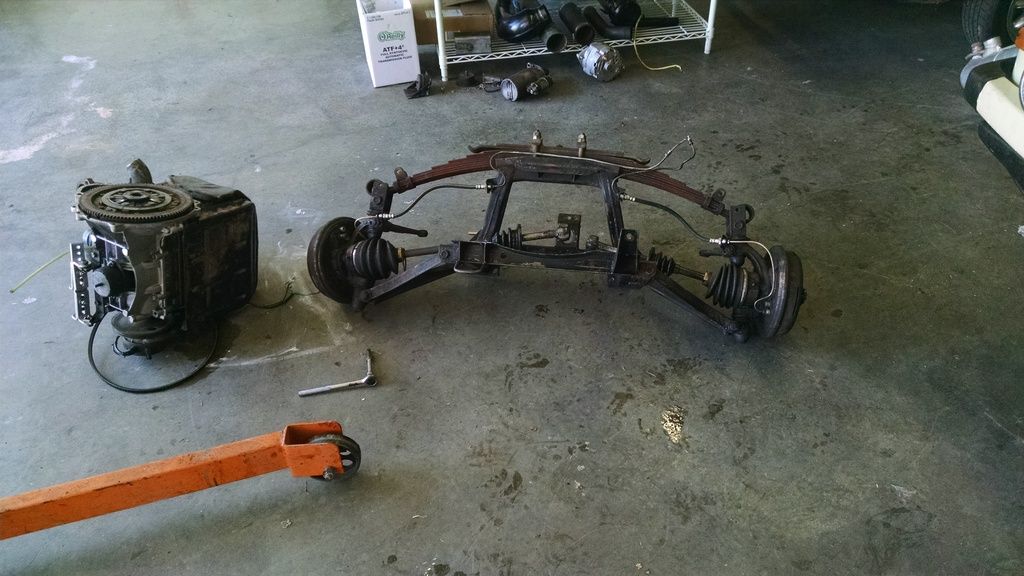Sorry for the late reply. I got my car fixed back in March or April. I can't remember but it's been doing fine ever since.
So I finally gave up on trying to solve this by using a thinner weight oil. I did not have the time to dismantle the transmission so I took it to a transmission shop. They charged me almost $700 to replace this worn piece plus the rollers and two bearings. Not even a full rebuild. Then I learned other Trabant owners in the US have purchased rebuilt transmissions and had them shipped over from Germany for less than that! Oh well.
What really irritated me the most was the guy did not get the circlip seated on 3rd gear which caused it to grind when shifting. SOOOO... I had to remove the transmission a second time! AARRGGHH!! Not that I don't make mistakes but when I do, it's on my own watch.
But it seems to be working fine.
I took the opportunity to do some degreasing. Ordinary degreaser would not phase the 30+ year old dried oil so I had to resort to using a wire brush, a spray bottle of kerosene and some #0000 steel wool:
Seems like a good idea at the time dropping the engine and transmission in from the top. Until I tried to align all three engine/transmission mounts...
So the second time around I dropped the entire engine, transmission, axles connected to the subframe. Still not as easy as dropping the drivetrain out of a Yugo but somewhat easier that the previous method. Not as much stuff to unbolt.
Some people claim they can lift the 80 lb engine out of the car and then lift up on the 30 lb transmission and pull the axles out. Well I'm a 150 lb weakling. I can't barely lift the engine off the ground, maybe 2" at best.
Further more, I'm convinced now that the red fluid that was leaking from one of the axles when I first got the car was automatic transmission fluid that someone had replaced to mask a worn freewheel device.
From what I've read, there was no such red die added to HLP 68.


